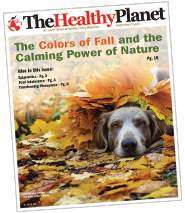By Cindy Gilberg
At the August ‘Wild Ones’ (www.stlwildones.org) native landscaping meeting, we toured a couple of native plant gardens in Maplewood. Despite the sweltering heat and lack of rain, the plants were thriving, blooming and full of pollinators, butterflies, and small birds. With so many species available in the native plant palette, choosing which ones are appropriate in different settings and designs can be a challenge.
The Whitmire Wildflower Garden at Shaw Nature Reserve (SNR) is a display garden, a teaching garden for the Native Plant School as well as a site for native plant trials in a landscape setting. Scott Woodbury, horticulturist at SNR, has come up with a list of native plants that he refers to as “top performing native plants”. Plants are observed over several seasons. After scrutinizing various aspects of the plants’ performance, those that make the cut go on the list.
Multi-seasonal interest is one of the qualities exhibited by the plants on the list. Often plants are chosen for their flowers alone, many of which may have short blooming times. While flowers are absolutely a plus, other aspects add to aesthetics. Interesting foliage or growth habit is one consideration. For example, the round glaucous leaves of false indigo (Baptisia) are wonderful in contrast to the fine textured grasses, sedges and slender mountain mint (Pycnanthemum tenuifolium). Others have leaves with rich golden, orange or red color in autumn, such as little bluestem (Schizachyrium) and black gum (Nyssa sylvatica). Think too about plants with colorful berries such as beautyberry (Callicarpa americana), dogwoods (Cornus spp.) and hawthorns (Crataegus spp.).
Plants that are long-lived are a must and help to form a durable and reliable landscape. These plants contribute to low-maintenance since they don’t need to be replanted often. Another attribute that is considered is compact form, in other words, those that don’t get leggy, fall over or need tip-pruning. For example, prairie alum root (Heuchera richardsonii) has a low, compact and mounded growth habit. Aromatic aster (Symphiotrichon oblongifolia) forms a 2 to 3 foot tall ground cover that adds late color in the garden.
Last but by no means least, plants on the top performing list must be available at local garden centers or from Missouri mail order sources. Nothing is more frustrating than to have that ‘perfect plant’ on your list and not be able to find it. Be sure to ask at your favorite garden center or refer to www.grownative.org for a listing of retail sources for Missouri native plants. The complete list of ‘Top Performing Native Plants’ is online at www.shawnature.org in the native landscaping section. This website is a great resource with many other native plant lists for specific landscape situations, a native plant database as well as general information on the use of native plants.
Cindy Gilberg is a Missouri native and horticulturist whose work includes design and consulting, teaching and writing. Much of her work focuses on native plants, habitat gardens and rain gardens. Cindy’s projects include work at Shaw Nature Reserve and its Native Plant School, the Shaw Professional Landscape Series and the Deer Creek Watershed Alliance. Cindy can be contacted at 314-630-1004; cindy.gilberg@gmail.com.


